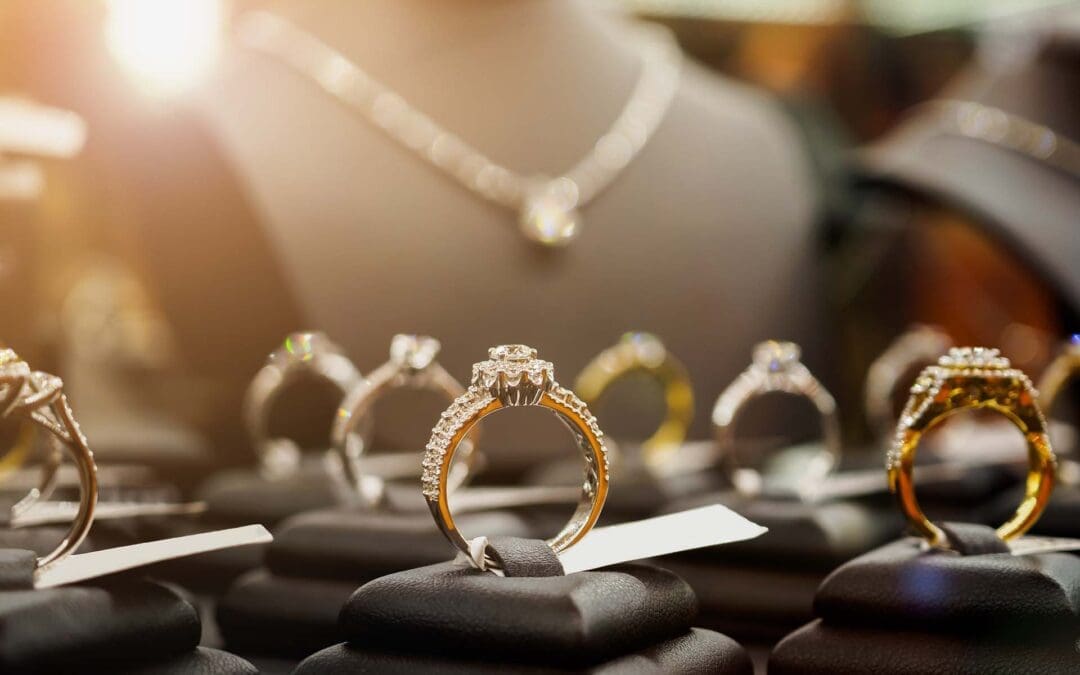Over the last decade, the mix of products purchased from custom jewelers has shifted in response to evolving consumer preferences, technological advancements, and broader cultural trends. Here are some of the key changes:
1. Rise in Demand for Ethical and Sustainable Jewelry:
- Ethical Sourcing: Consumers have become more conscious of the environmental and ethical implications of their purchases. This has led to a growing demand for ethically sourced gemstones and metals, such as conflict-free diamonds and recycled gold.
- Lab-Grown Diamonds: There has been a significant increase in the popularity of lab-grown diamonds. These diamonds are virtually identical to mined diamonds but are often more affordable and come with the added appeal of being more environmentally friendly.
2. Increased Popularity of Personalization and Customization:
- Personalized Pieces: The trend towards personalization has grown, with more customers seeking unique, custom-designed jewelry. This includes personalized engravings, birthstone selections, and custom settings.
- Customized Engagement Rings: Over the past decade, there has been a notable increase in customers opting for custom engagement rings rather than pre-made designs. Couples are increasingly involved in the design process to create rings that reflect their personal style and story.
3. Growth of Minimalist and Everyday Jewelry:
- Minimalist Designs: The minimalist trend has driven demand for simple, elegant pieces that can be worn daily. This includes delicate necklaces, thin stacking rings, and subtle earrings.
- Everyday Wear: There has been a shift towards purchasing jewelry that is not just reserved for special occasions but can be worn every day. This has expanded the market for custom jewelry that is both versatile and durable.
4. Technology-Driven Design and Production:
- 3D Printing and CAD Technology: The adoption of 3D printing and computer-aided design (CAD) has transformed the custom jewelry industry. These technologies allow for more precise and intricate designs, which has expanded the possibilities for customization and made custom pieces more accessible to a broader audience.
- Online Customization Tools: Many jewelers now offer online customization tools, allowing customers to design their own jewelry pieces through interactive websites. This has led to an increase in custom orders as the process becomes more user-friendly.
5. Shift Toward Colored Gemstones:
- Colored Engagement Rings: While diamonds remain popular, there has been a noticeable trend towards colored gemstones in engagement rings and other custom jewelry pieces. Sapphires, emeralds, and rubies have become more prominent as customers seek out unique, non-traditional options.
- Birthstone Jewelry: Custom birthstone jewelry has gained popularity, with customers often choosing pieces that incorporate their own or their loved ones’ birthstones in personalized designs.
6. Vintage and Antique-Inspired Designs:
- Retro and Art Deco Influences: There has been a resurgence in demand for vintage and antique-inspired jewelry, particularly designs influenced by Art Deco, Victorian, and Edwardian styles. This trend reflects a broader interest in nostalgia and timeless elegance.
- Repurposing Heirlooms: Many customers now seek to repurpose family heirlooms into new custom pieces, blending sentimental value with modern design. This trend has led to more custom orders for redesigning and updating older jewelry.
7. Increased Focus on Men’s Jewelry:
- Men’s Custom Jewelry: The market for men’s jewelry has expanded significantly, with more men purchasing custom rings, bracelets, necklaces, and cufflinks. This includes both fashion-forward pieces and traditional items like wedding bands.
- Customization for Men: Men are increasingly interested in custom options, including personalized engravings, unique materials (such as wood or alternative metals), and bold designs that reflect their personal style.
8. Engagement with Social Media and Online Influencers:
- Influencer-Driven Trends: Social media platforms, especially Instagram and Pinterest, have played a major role in shaping consumer preferences. Trends like stackable rings, mixed metal jewelry, and bespoke pieces have been popularized by influencers, driving demand for similar custom products.
- Direct-to-Consumer Brands: The rise of direct-to-consumer (DTC) custom jewelry brands online has made it easier for customers to access and purchase custom jewelry. These brands often offer a wider range of customization options and leverage social media to attract a global audience.
9. Emphasis on Experiential Purchases:
- Custom Jewelry as Experience: For many consumers, purchasing custom jewelry has become an experiential process, not just a transaction. Jewelers who offer a memorable experience—such as design consultations, virtual appointments, or storytelling around the piece—have seen an increase in loyalty and repeat business.
These trends reflect broader shifts in consumer values and technology, with an increased focus on personalization, sustainability, and design innovation. Custom jewelers who adapt to these changes by offering a diverse range of products and embracing new technologies have been able to stay competitive in this evolving market.
Frequently Asked Questions
K
L
Are gemstones in demand?
Yes, gemstones are in high demand, with growing interest in both traditional and alternative stones. Consumers increasingly seek out gemstones for their beauty, symbolism, and perceived value, often favoring them in engagement rings, personalized jewelry, and fashion accessories. The demand for ethically sourced and unique gemstones has also surged, driven by a desire for pieces that reflect individual style and values.
K
L
Why are gemstones so popular?
Gemstones are popular due to their vibrant colors, rarity, and the personal meaning they can carry. Each gemstone is often associated with specific traits or symbolism, such as sapphires for wisdom or emeralds for love, making them appealing as personalized gifts or significant pieces in custom jewelry. Additionally, the allure of owning something rare and naturally beautiful has kept gemstones at the forefront of jewelry trends for centuries.
K
L
What are the top 4 gemstones?
The top four gemstones are diamonds, sapphires, emeralds, and rubies. Diamonds are the most popular, known for their brilliance and hardness, making them the traditional choice for engagement rings. Sapphires, prized for their deep blue hue, are also popular, especially in high-end jewelry. Emeralds, with their rich green color, are associated with luxury and are highly valued. Rubies, known for their vibrant red color, are also among the most sought-after gemstones for their beauty and rarity.
K
L
Why don't millennials buy diamonds?
Millennials are less likely to buy diamonds due to a combination of factors, including the high cost, ethical concerns about the diamond industry's environmental and social impact, and a preference for unique, personalized alternatives. This generation tends to value experiences over material possessions and may opt for other gemstones or non-traditional engagement rings that better reflect their personal values and style.
K
L
Are Gen Z buying diamonds?
Gen Z is buying diamonds, but with a different approach compared to previous generations. This younger demographic is more conscious of sustainability and ethical sourcing, leading to an increased interest in lab-grown diamonds, which are often seen as a more environmentally friendly and affordable alternative to mined diamonds. They also tend to favor unique and customized designs, which may include diamonds but in non-traditional settings or paired with other gemstones.
K
L
Why is the price of natural diamonds changing?
The price of natural diamonds is changing due to a combination of factors, including shifts in consumer demand, advancements in technology, and fluctuations in supply. As more consumers, particularly millennials and Gen Z, prioritize ethical sourcing and sustainability, there has been a growing interest in lab-grown diamonds, which are often less expensive and environmentally friendly. This has put pressure on the natural diamond market, leading to price adjustments. Additionally, economic factors such as inflation, global trade policies, and changes in mining operations impact the availability and cost of natural diamonds, causing prices to fluctuate. As the industry adapts to these evolving dynamics, the pricing of natural diamonds continues to experience shifts, particularly starting in Summer of 2022 when a significant decline in prices started.


